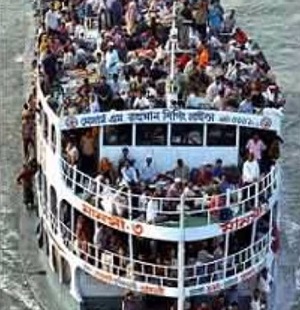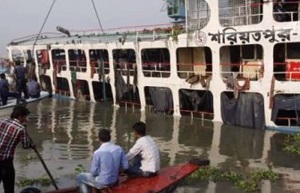No Change in Ferry Death Rates
Over the past two decades ferry incidents in the E.U. have continued to occur at roughly the same rate, but the number of ferry fatalities has markedly declined.
Speaking at the 2015 World Maritime Rescue Congress, Kiersten Reid-Sander, a research assistant with the International Maritime Rescue Federation, attributes this largely to improved search and rescue response.
“Such a trend cannot be seen in developing nations,” says Reid-Sander. “In many cases response, or lack of, is the same today as it was 15 years ago. Already in March 2015, Myanmar experienced their worst recorded ferry disaster in the past 15 years with more than 63 people killed. Volunteers led rescue efforts and there was no mention of an official, organised SAR response. In total six fatal ferry accidents have been reported in early 2015, with more than 295 people killed,” she says.
 Ferries in developing nations are often the only available mode of transportation, leaving people no choice but to board overloaded, unsafe ferries for their daily commute. Ferry capacity is increasing, and when a mass rescue is necessary resources are not necessarily available. The number of victims often overwhelms rescuers.
Ferries in developing nations are often the only available mode of transportation, leaving people no choice but to board overloaded, unsafe ferries for their daily commute. Ferry capacity is increasing, and when a mass rescue is necessary resources are not necessarily available. The number of victims often overwhelms rescuers.
“Search and rescue authorities in developing nations are under resourced and overwhelmed with vast rivers, lakes and coastlines to monitor,” says Reid-Sanders.
For 70 of the accidents reported by the Worldwide Ferry Safety Association (WFSA), other vessels or fishermen were first on the scene to rescue victims. Official rescuers, who may have had some search and rescue training, are mentioned for only 40 out of the 159 accidents identified by WFSA e.g. local police, fire service, navy, coast guard etc. In 23 cases, no rescuers were available to help, with survivors being those who were able to swim ashore.
 “Lack of communications in many countries means authorities do not become aware of an accident before it is too late,” she says. Ferry accidents in developing nations often happen in remote areas where difficult terrain and vast distances can debilitate the rescue response to an emergency.
“Lack of communications in many countries means authorities do not become aware of an accident before it is too late,” she says. Ferry accidents in developing nations often happen in remote areas where difficult terrain and vast distances can debilitate the rescue response to an emergency.
However, according to Reid-Sanders, some new initiatives are underway to help these nations achieve better survival rates. In response to the necessity of ferry travel combined with a vast river network and limited official search and rescue resources, a promising initiative has been introduced in Vietnam, she says. The “Safety First” ferry stations manned by volunteers with first aid training and river rescue skills has been welcomed by the local communities with passengers no longer fearing for their safety when crossing the river on their way home.
A similar initiative has reportedly been in place for many years in Nigeria where families are in charge of rivers and leading search and rescue operations.
Another promising initiative has emerged in the Democratic Republic of Congo. A U.N. unmanned aerial vehicle was able to spot a ferry sinking and then remain at the scene searching for survivors and providing situational awareness. This aided the subsequent lifesaving operation that was launched by providing real-time imagery to support reaction to incidents.
